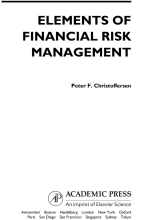Historical Simulation, Value-at-Risk, and expected shortfall
4 important questions on Historical Simulation, Value-at-Risk, and expected shortfall
What is does the HS TECHNIQUE assumes.
What is the problem of HS approach
Why is it dangerous to rely on large p var
- Higher grades + faster learning
- Never study anything twice
- 100% sure, 100% understanding
Why is ES better than Var
The question on the page originate from the summary of the following study material:
- A unique study and practice tool
- Never study anything twice again
- Get the grades you hope for
- 100% sure, 100% understanding































